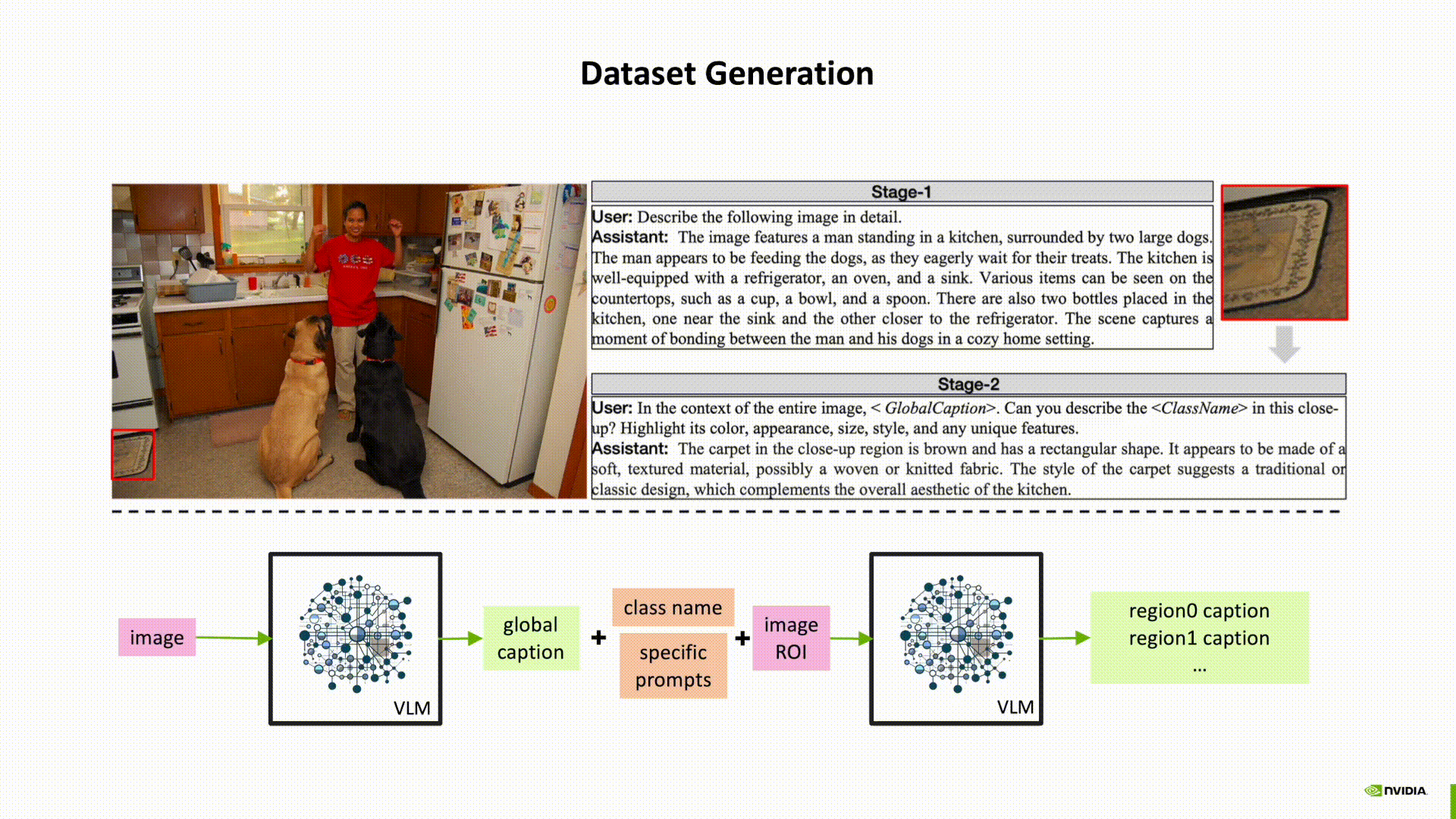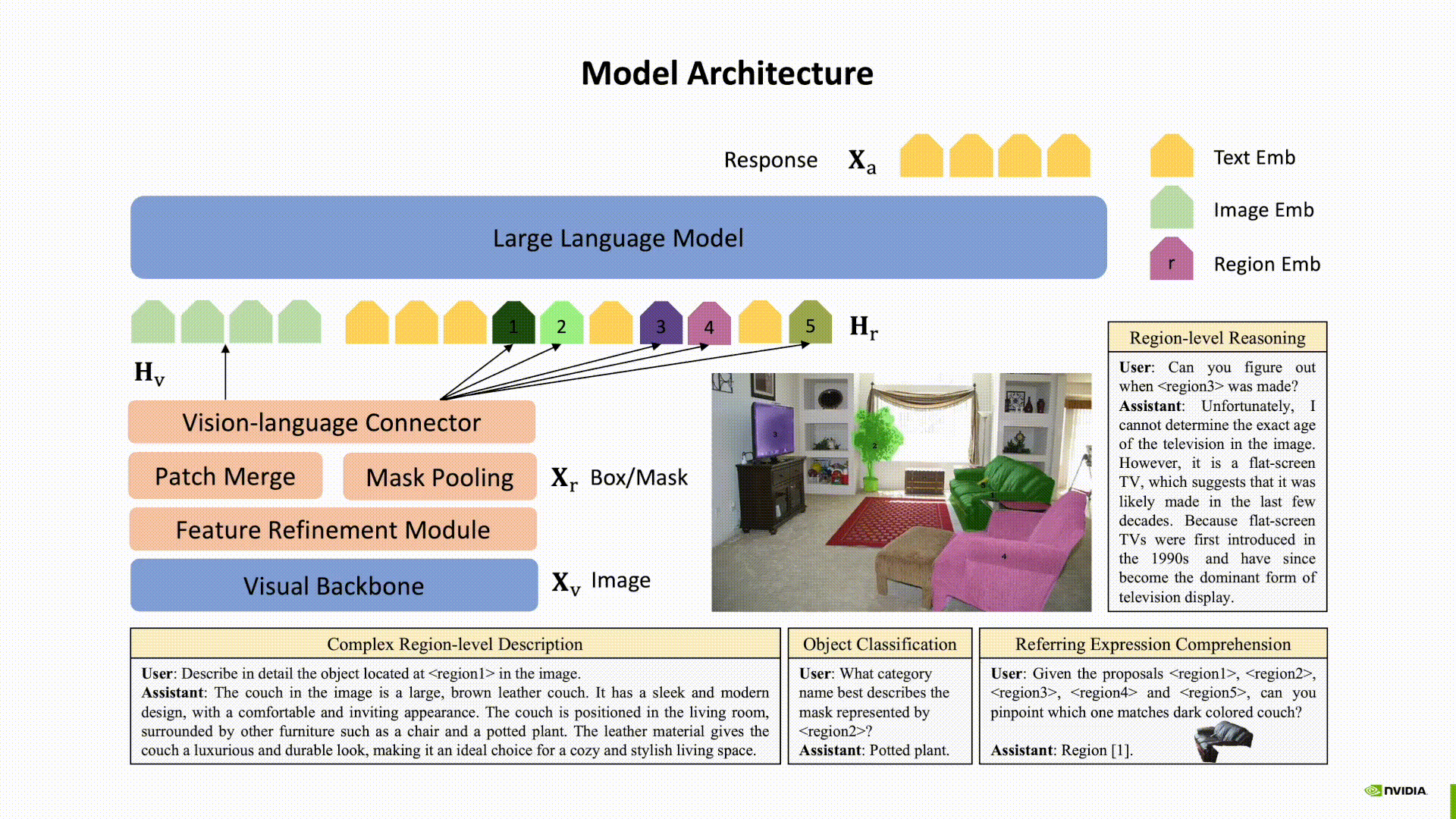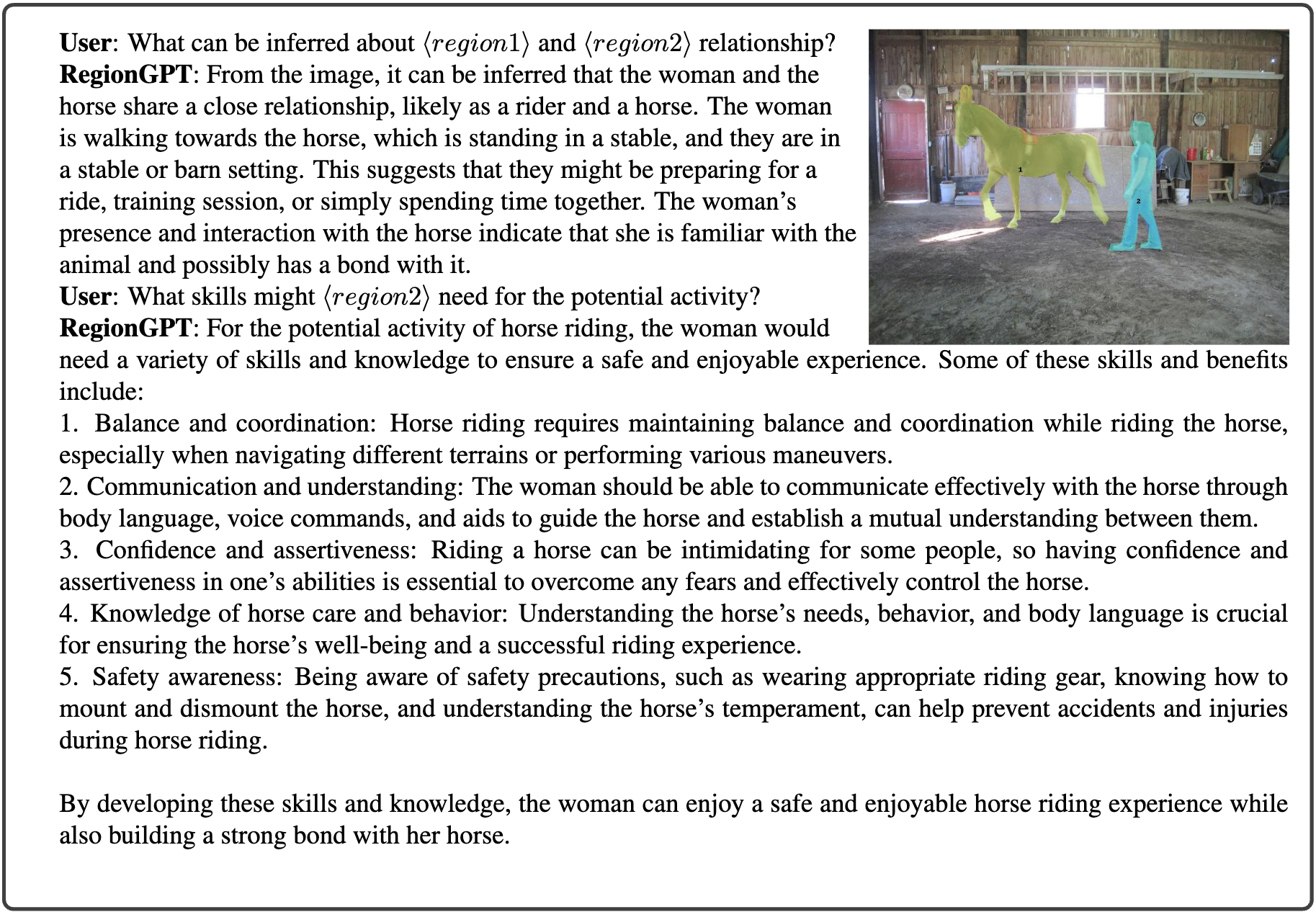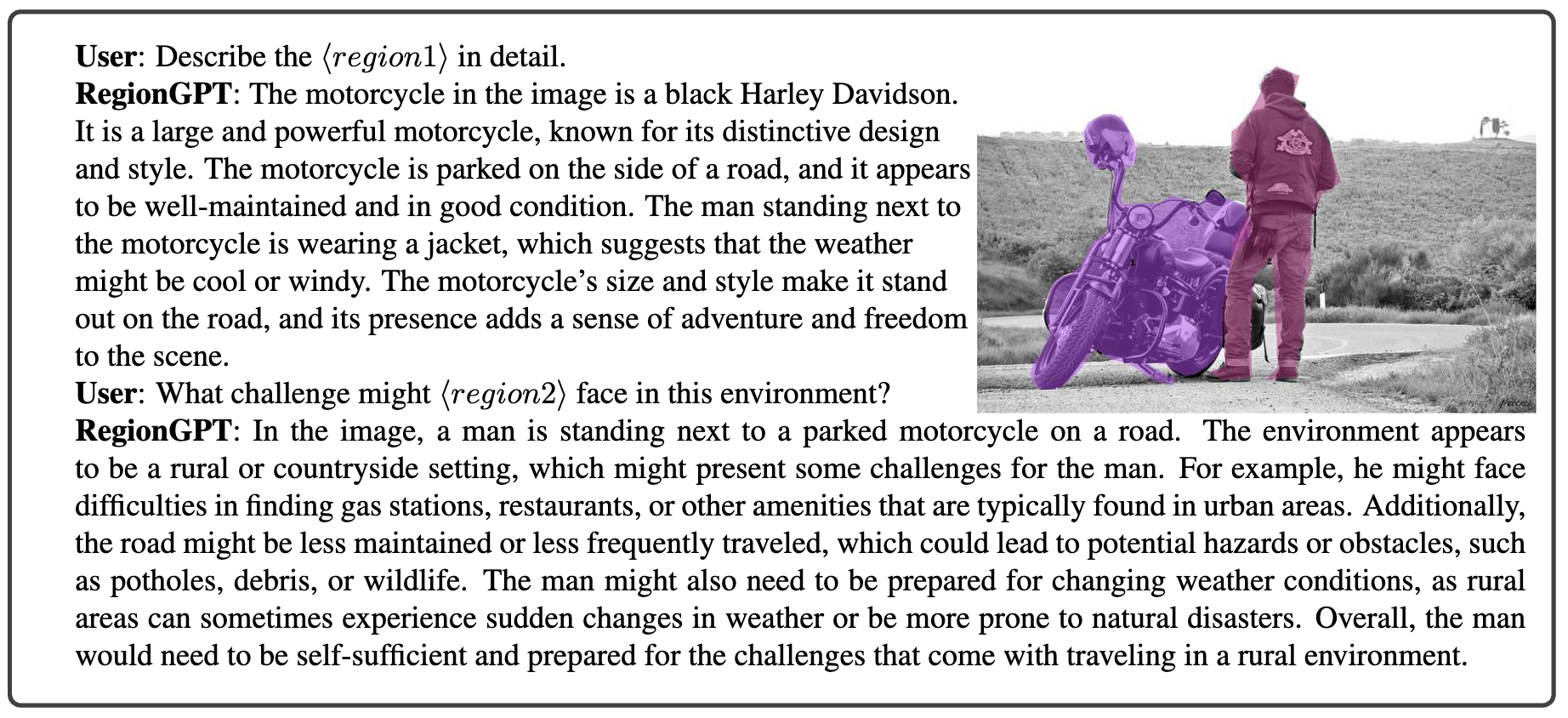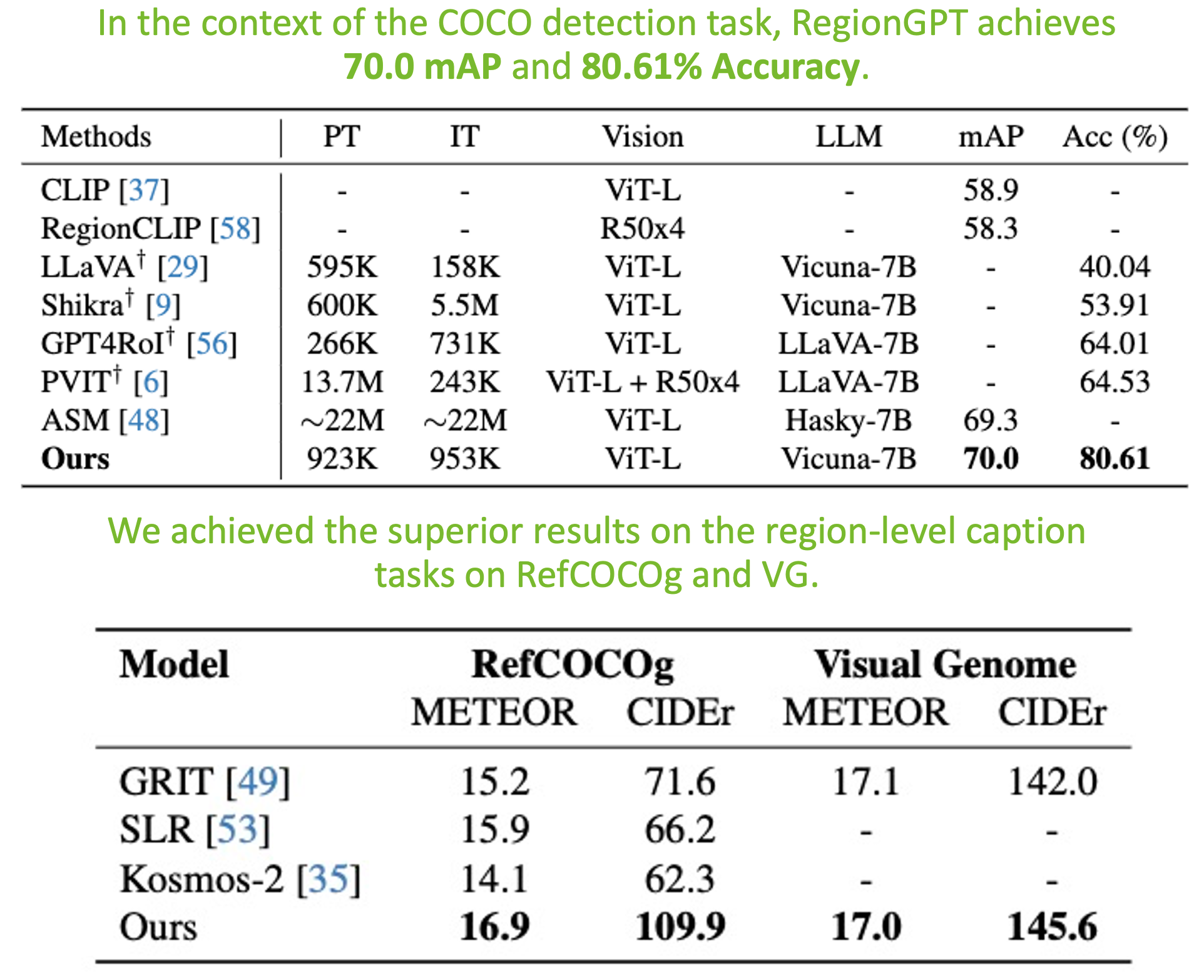We explore using an existing global-level image captioning VLM, i.e., LLaVA for region-specific tasks.
The proposed pipeline is composed of two stages.
In the first stage, we generate a global-level caption for the image using the VLM.
This global description is then used as contextual information,
which we include in the form of text at the beginning of the prompt. Subsequently in the second stage,
by inputting the ROI, the VLM is prompted to describe the specific region represented by the image patch.
We illustrate this approach with a detailed example in the following:
In the context of the entire image, <GlobalCaption>, describe the close-up region in detail.
We further enhance our approach by incorporating human-annotated class names as an additional condition
when prompting the VLM to describe the properties of the region:
In the context of the entire image, <GlobalCaption>, describe the <ClassName> in the close-up region in detail.
